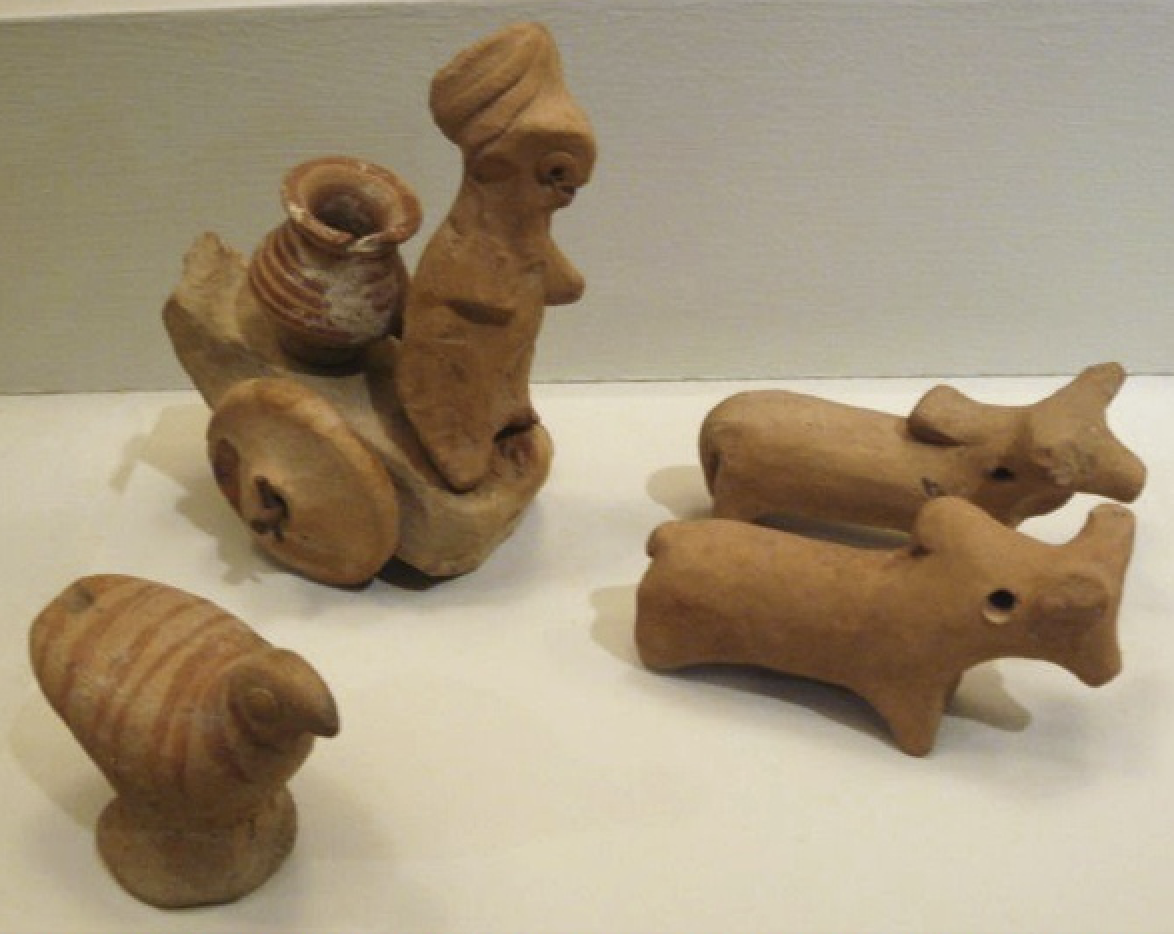Matthew G. Marsh
The Indus region today receives less rainfall than it did in ancient times, so it is not as fertile as it was during the period of the Indus Valley Civilization. Greater rainfall, coupled with the annual flooding of the Indus River, gave the region enormous fertility. The archaeological remains of protective walls, made of burnt bricks, indicate that floods were an annual event, giving the population of the Indus Valley Civilization the nutrient-rich soil needed for farming. [1] The primary crops cultivated by the Indus Valley Civilization were several types of wheat and barley. Inhabitants followed what is today known as rabi cultivation, in which seeds are sowed in the flood plains during November. Then, before the spring floods arrived in April, farmers harvested their crops of wheat and barley. The Indus Valley Civilization also began cultivating several other cereal grains as well, bringing varieties of millets into production at a number of sites. The types of crops being produced varied according to the particular environment of an Indus city.[2]
In addition to these main staple crops, the Indus Valley Civilization also grew cotton, dates, jujube, grape, and melons. Cotton was used for weaving, while the other crops supplemented the primary diet of the Indus people. Development of the plow in the early period of the Indus Civilization encouraged widespread agricultural cultivation, while the domestication of the zebu cattle provided oxen to pull the plow in the field. After the growing season, the Indus inhabitants primarily used stone sickles to harvest their crops due to the expense of copper or bronze implements.[3] Once harvested, the crops were stored in large granaries, examples of which were found in Mohenjo-Daro and Harappa. Based on similar situations in Mesopotamia, historians believe that grain may have been received as taxes in kind and stored to be used as payment of wages. [4]
Figure 3. Miniature Votive Images or Toy Models of Indus Valley Oxen, Cart and Driver, and Other Livestock ca. 2500 BCE, Photograph by Trish Mayo, CC-BY 2.5. https://commons.wikimedia.org/wiki/File:Harappan_small_figures.jpg.
The Indus Valley Civilization also domesticated a large number of animals that were used to support agricultural production. Oxen drew the carts and plow of the Indus farmers, while cows provided milk (fig. 3). Both types of livestock served as the major source of meat for the people of the Indus Valley Civilization. While oxen were the primary beasts of burden for the Indus, asses and Bactrian two-humped camels were also bred and used for the same purpose. Water buffaloes, goats, sheep, and pigs were domesticated as well.[5]
[1]. Habib, The Indus Civilization, 27–28; Jha, Early India, 33–35; Sabahuddin and Shukla, History of Ancient Indian Economy, 81–85; and Sharma, India’s Ancient Past, 77–79.
[2]. Dani and Thapar, “The Indus Civilization,” 274–75; Habib, The Indus Civilization, 24–25; Jha, Early India, 33–34; Jha, Ancient India, 34–35; Mehta and Mehta, History of Ancient India, 98–100; Abdul Sabahuddin and Rajshree Shukla, History of Ancient Indian Economy (New Delhi: Global Vision Publishing House, 2010), 79–81; and Sharma, India’s Ancient Past, 77–78.
[3]. Habib, The Indus Civilization, 24-27; Jha, Early India, 33–34; Jha, Ancient India, 34–35; Mehta and Mehta, History of Ancient India, 98-100; Sabahuddin and Shukla, History of Ancient Indian Economy, 73-77; Sharma, India’s Ancient Past, 77–78.
[4]. Habib, The Indus Civilization, 27–30; Jha, Early India, 33–34; Sabahuddin and Shukla, History of Ancient Indian Economy, 73–78; and Sharma, India’s Ancient Past, 77–79.
[5]. Chopra et al., Comprehensive History, 14; Dani and Thapar, “The Indus Civilization,” 275–76; Habib, The Indus Civilization, 45; Jha, Early India, 33–34; Joshi, Harappan Architecture, 108–10; Mehta and Mehta, History of Ancient India, 107–09; Sabahuddin and Shukla, History of Ancient Indian Economy, 98; and Sharma, India’s Ancient Past, 78.


